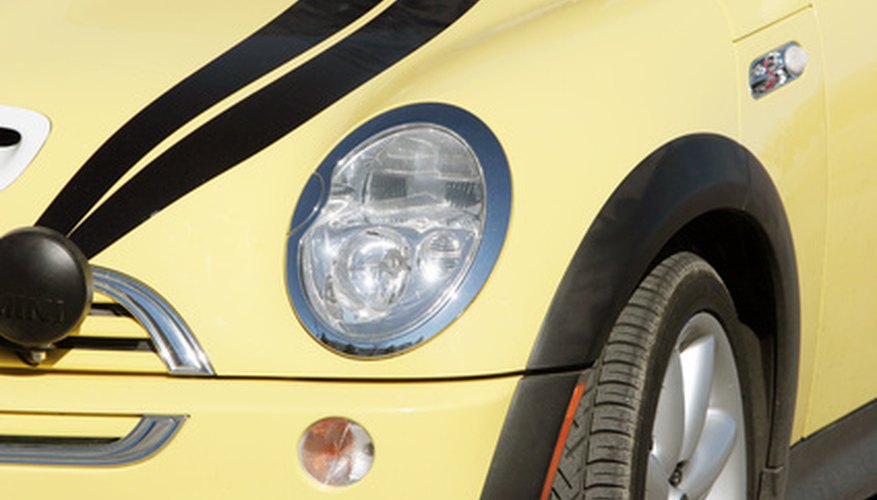MINI gave the first generation of the Cooper S the internal designation "R53." The Cooper S (R53) packed an additional 50 horsepower over the standard Cooper and was introduced to United States market in 2002, one year after the MINI Cooper hit the market. MINI redesigned the Cooper S and it entered its second generation in 2007, receiving the new internal designation of R56. The alignment specs for the R53 changed several times during its four-year tenure. The caster angle was not adjustable on the front or rear of any R53 because they all came with front-wheel-drive and fixed rear axles.
Camber
Camber is the angle a wheel tilts when viewed from the front or rear of the vehicle. Wheels that tilt out at the top demonstrate positive camber. Wheels that tilt in at the top demonstrate negative camber. The preferred setting for the camber angle on the front end of the 2006 MINI Cooper S was -0.5 degrees, but it could vary by up to 0.42 degrees in either direction, with a cross tolerance of 0.5 degrees. The preferred setting for the camber angle on the rear end was -1.75 degrees, but it could range by up to 0.33 degrees in either direction.
- Camber is the angle a wheel tilts when viewed from the front or rear of the vehicle.
- The preferred setting for the camber angle on the rear end was -1.75 degrees, but it could range by up to 0.33 degrees in either direction.
Toe
Toe is the angle of a wheel in relation to the centre line of the vehicle when viewed from above. Toe-in is given in positive degrees or inches and means that the front of a wheel is angled slightly inward toward the centre line of the vehicle. The preferred setting for toe-in on the front end of the R53 was +0.3 degrees, but it could vary by 0.08 degrees in either direction. The preferred setting for the toe-in on the rear end was +0.4 degrees, but it could vary by 0.13 degrees in either direction.
- Toe is the angle of a wheel in relation to the centre line of the vehicle when viewed from above.
- The preferred setting for the toe-in on the rear end was +0.4 degrees, but it could vary by 0.13 degrees in either direction.
Turning Angle and Thrust Angle
The turning angle is also know as the "toe-out on turns." The front wheels pivot independently when turning, and the turning angle refers to the difference in the angle of the inner and outer front wheels when making a turn. The preferred turning angle for the front wheels of the 2006 MINI Cooper S was 20 degrees for the inner wheel and 18.7 degrees for the out wheel, with a range of 0.5 degrees in either direction. The thrust angle is the angle of the rear wheels in relation to the centre line of the vehicle. Thrust angle is related to toe. If the thrust angle is misaligned, it can often be solved by adjusting the rear toe to the centre line and then adjusting the front toe. The preferred thrust angle for the R53 was +0.17 degrees.
- The turning angle is also know as the "toe-out on turns."
- If the thrust angle is misaligned, it can often be solved by adjusting the rear toe to the centre line and then adjusting the front toe.
